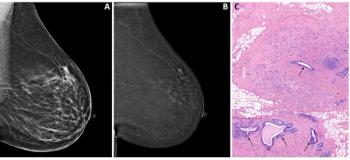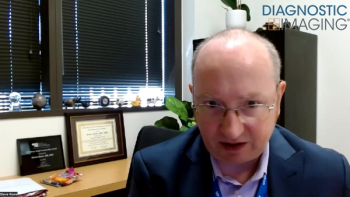
Worth the Cost? Weighing Radiology Society Membership
A look into what drives radiologists’ decisions to join, or not join, radiology societies.
After finishing his radiology residency in 2004, Anthony Posteraro, MD, joined several major societies – ACR, RSNA, ARRS, and a few others. Membership dues were steep, but as a resident, he got a much-appreciated discount.
Now a diagnostic radiologist in private practice at Saint Francis Hospital and Medical Center in Hartford, CT, Posteraro said he believes society membership is more critical these days than ever due to the healthcare overhaul and medicine moving from a fragmented to more unified system.
He explained that radiologists increasingly are going to need societies for guidance and assurance that they will be integral and well-positioned members of the medical care team.
Many agree that the major societies provide valuable services. But are their fees worth the benefits? Is there too much overlap? Are societies keeping up with the pace of change?
Indeed, radiologists are not making as much
Already they have lost Bruce Reiner, MD, director of radiology research at the VA Maryland Health Care System in Baltimore and a member of Diagnostic Imaging’s editorial board.
During his career, Reiner has been a member of all of the major societies, even once serving as a high-level committee chair for the Society for Imaging Informatics in Medicine (SIIM).
Career shifts prompted some discontinued memberships, he said. Swollen bureaucracies led to other discontinued memberships - notably his decision to leave the American College of Radiology, one of the profession’s staunchest policy advocates.
While Reiner acknowledged that political advocacy benefits everyone in the field, he said he is not convinced that the organization’s successes justify the $875-per-year dues for active, board-certified radiologists. That figure is up 3% from 2013, where it had been steady at $850 since at least 2012, according to Shawn Farley, a spokesman for ACR.
“If I believe an organization like the ACR has excessive bureaucracy, should I be burdened to support it?” Reiner said. “The radiology community has the right to individually choose what organizations they do and do not belong to. In the end, an organization which provides economic and professional value and service to its members will thrive.”
Evens, past president of both the ACR and ARRS, professor of radiology at Washington University School of Medicine in St. Louis, agreed that value depends on individual preference.
ACR probably does not need to be doing as much education, he said; but that’s a leadership decision. “Economics ultimately will force societies to adhere to their true missions.”
Evens segregated societies roughly into two camps.
There are the large, national societies, such as the ACR, RSNA, SIIM, ARRS, etc. Most have specialized missions, and he said he believes they offer value to members. ACR is primarily policy, while the others focus primarily on education.
Then there are the dozens of specialty societies - twice as many as there needs to be, Evens said. Some of these societies have questionable value and serve primarily as fundraisers, he said.
Evens suspects economics also will drive closures, mergers, and consolidations as radiologists increasingly use their money more wisely. “Societies ultimately will get down to the right level,” he said. “Many will just die on the vines.”
At least two societies already have merged - the Society of Gastrointestinal Radiology and the Society of Uroradiology are now the Society of Abdominal Radiology, said Gerald D. Dodd III, MD, professor and chair of radiology at the University of Colorado, and chair of the Intersociety Committee of the ACR, established in 1979 to promote communication among societies. Members include the leaders of all 50-plus radiological organizations in the United States, and meetings are held annually.
Another merger, between the ACR and ARRS, failed, Dodd said. Merging two societies in itself is a daunting task, and with ACR and ARRS, there was the added difficulty of trying to align organizations with different focuses. “Bringing the two cultures together didn’t happen-at least it didn’t happen quickly enough,” he said.
Dodd said the topic of consolidation comes up frequently at Intersociety Committee meetings. With consolidation and greater collaboration between organizations, he said, there would be substantial economies of scale, fewer meetings, and coordination of content. Advocacy would likely be more effective with multiple organizations speaking with one voice.
He also noted that many of the societies are supported by radiologists in academia. Sustaining these societies likely will be an increasing challenge as academic departments are forced to make decisions with contracted funding.
“I think the vast majority of attendees [at a recent Intersociety Committee meeting] were in support of consolidation,” Dodd said. “But then you say, ‘OK, which ones are we going to consolidate?’”
“It’s good until you get to the details,” he said.
The ACR’s new chief executive officer, William T. Thorwarth, Jr., MD, a diagnostic radiologist formerly with Catawba Radiological Associates in Hickory, NC, said he has been a member of radiology societies, including ACR, throughout his 30 years of clinical practice.
“Just being a member, I appreciated what the college was doing on behalf of members with respect to reimbursement, medical coding, and how you accurately report the services you’re providing,” he said. “I trusted that the college was taking care of all this.”
Thowarth acknowledged that membership, hovering at about 35,000 and encompassing about 75% of the entire population of radiologists, is growing more slowly than in the past.
To radiologists who choose not to join, Thorwarth said that any radiologist who can honestly conclude that they are not $20 per week better off because of what the ACR has done on their behalf should not be a member.
As healthcare reform takes place and practices experience decreases in revenue, organizations are going to have to work harder to demonstrate their value to members. Likewise, he said, in turbulent times it’s more critical than ever for radiologists to support societies.
“How we handle the challenges and opportunities we’re confronted with today will have a great impact on the practice of radiology in the future,” he said. “Members recognize that it’s very important to have us working on their behalf.”
Most societies, like the RSNA and the ARRS, which is the nation’s oldest, focus on education. For RSNA, the biggest benefit to members is the annual meeting in Chicago, each year attracting more than 50,000 attendees worldwide, said Ronald L. Arenson, MD, president-elect of the society and chairman of radiology and biomedical imaging at the University of California San Francisco.
The most highly educated radiologists in the world lead the education sessions, there is a large technology display at every meeting, along with scientific sessions and ample opportunity to make connections, and RSNA funds more research grants every year than any other society, he said.
Given the changing economics of radiology, and all of medicine, radiologists will gravitate to those societies that offer the best services for the best value. Those societies best able and willing to adapt to emerging healthcare models and members’ needs will be the likely survivors.
“Like any business, we have to be in touch with the marketplace,” said Susan Brown Cappitelli, executive director of ARRS.
With about 21,000 members, ARRS has experienced steady growth over the years, attracting new members primarily through its educational offerings, along with networking and mentoring opportunities,
ARRS regularly surveys members, and with healthcare in flux, radiologists are particularly concerned with being prepared, she said. Not only are the annual meetings packed, but educational content is offered both in hard copy and virtually, she said - “to ensure that the content we’ve developed has the broadest reach.”
Also in response to members, the Society for Breast Imaging is adding more scientific content to its meetings, said Debra L. Monticciolo, a society fellow and chief of breast imaging with Scott & White Healthcare in Texas.
Another push is to engage young radiologists, said Monticciolo, also a fellow with ACR. “We need to make [society membership] appealing for them, to remind them that we’re here, and we value their input,” she said.
Monticciolo noted that with the more than 50 radiology societies, the Society of Breast Imaging is the only one focusing on the breast. “We’re growing,” she said, “and we don’t overlap.”
Newsletter
Stay at the forefront of radiology with the Diagnostic Imaging newsletter, delivering the latest news, clinical insights, and imaging advancements for today’s radiologists.






























